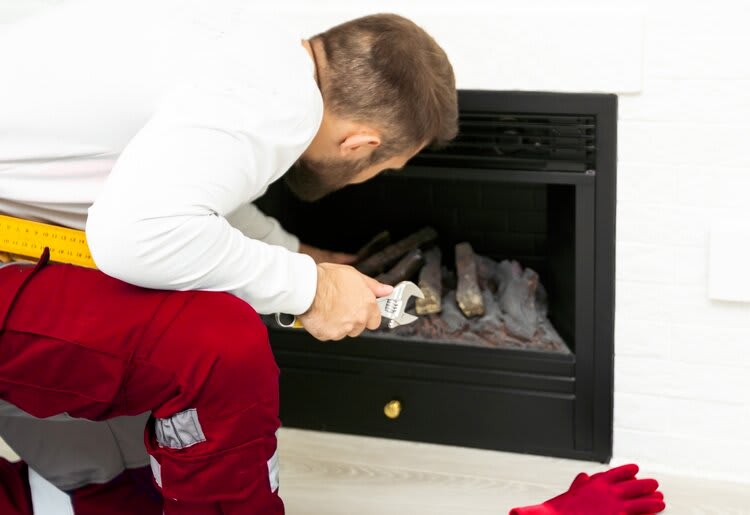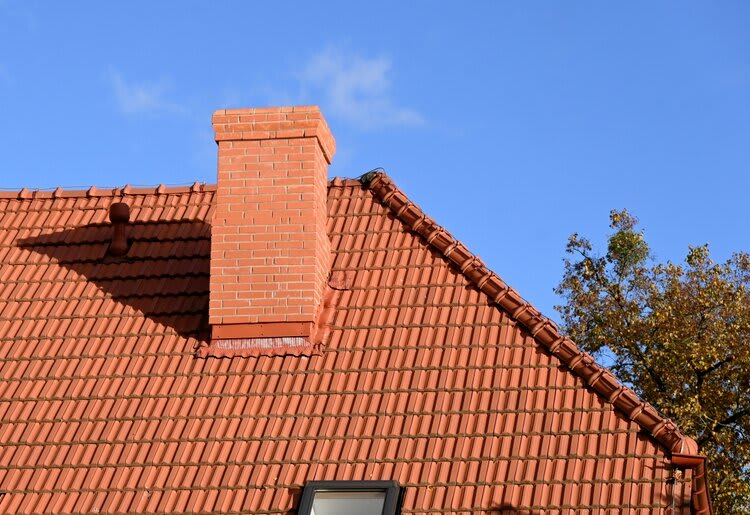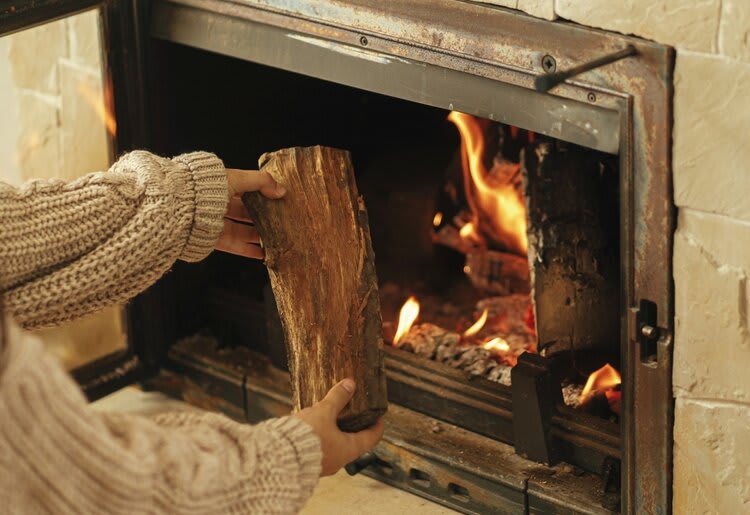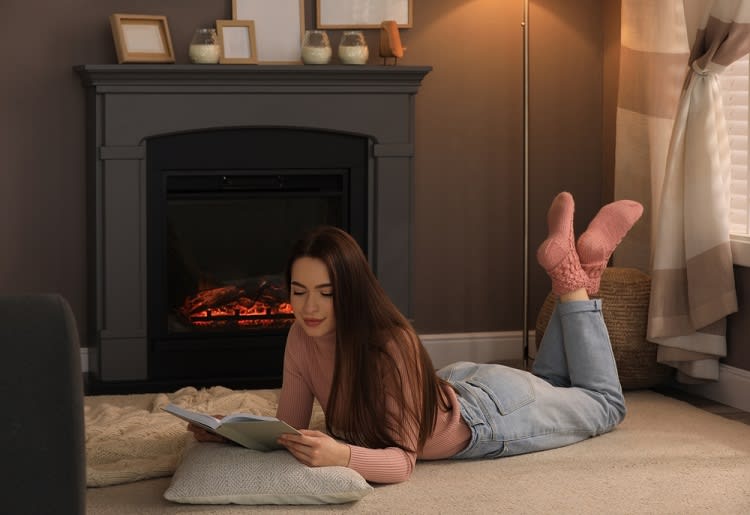A little fireplace maintenance and the means to cover repairs and replacements can go a long way toward preventing serious problems—and potential disasters—down the road.
A fireplace that isn't well maintained is already a health and safety hazard. Any chance of something outside your fireplace setting alight could lead to expensive damages—even death. So, to help you not die, here are ten potentially life-saving tips for maintaining your fireplace this fall.
» Want repairs and replacements in your home done at reduced rates? Check out our top 10 picks for the best home warranty companies.
1. Don’t Use Your Fireplace if the Damper Is Damaged or Stuck Open
According to the National Fire Protection Association, heating equipment is the leading cause of home fire deaths in the U.S.
The damper is a metal plate that covers the fireplace's opening; it's what you open when you want to start a fire and close when you're done. It's essential to ensure the damper is in good working condition because it also helps keep dangerous gasses like carbon monoxide (produced by burning fuel) from leaking into your home. It also helps prevent cold air from coming into your home and hot air from escaping up the chimney, reducing the need for heating during winter.
If the damper is damaged or stuck open, don't use the fireplace until it's been repaired by a professional.
2. Schedule an Annual Inspection
Like your furnace and air conditioner, your fireplace must be inspected by a professional every year. There are several types of fireplaces, but the two most popular ones are gas and wood burning.
If you have a gas fireplace, your technician will check the gas lines to ensure that there aren't any leaks. This is an important safety step, as even a small gas leak can be incredibly dangerous. They'll also inspect the firebox and flue to make sure everything is in good working order.
If you have a wood-burning fireplace, you should also have the chimney cleaned at least once a year to remove any built-up soot and creosote. These can be highly combustible, and a chimney fire can quickly spread to the rest of your home.
» Using a gas furnace? Here's how you can prevent carbon monoxide poisoning.

3. Don’t Wait Until It’s Cold to Use Your Fireplace
Many people only light fires when it's cold outside, but that's not a good idea. Once a month or so, build a small fire and let it burn for about an hour. This will help dry out any moisture that may have built up over the summer, and it will also help you identify any potential problems before they become big—and expensive—ones. This includes cracks in the firebox or flue, which can quickly spread if not repaired.
4. Keep Your Fireplace Clean
Ashes are a great fertilizer for gardens, but they're not so great for fireplaces. Every few weeks (more often if you're burning wood), sweep out the ashes and dispose of them properly. And while you're at it, make sure to keep the area surrounding your fireplace free of combustibles. So, for example, if you have a stack of wood next to your fireplace, make sure it's at least three feet away from the firebox.
5. Get Rid of Old Logs Before Adding New Ones to the Pile
Before you add any new logs to your stockpile, remove any old ones that are taking up space (you can use them for kindling). This helps ensure that you're only burning fresh, dry wood, which is much safer—and more effective.
Logs that have been sitting around for a while can absorb moisture from the air, which makes them harder to light and decreases how well they burn. They can also harbor insects like ants and spiders. They can then find their way into your home, which is the last thing you'd want.
6. Inspect Your Chimney Regularly
Take a look at your chimney at least once a month during the fall and winter months. If you see any cracks or holes, have them repaired as soon as possible by a professional. These gaps can let in cold air, making your fireplace less efficient. They can also let in water, which can cause severe damage to your chimney.
Debris, like leaves or bird nests, can cause partial blockages that significantly reduce draft and increase the risk of fire hazards in the home—not to mention making it harder to start a fire in the first place. Blockages can also lead to hazardous gas buildup, which can cause fatal carbon monoxide poisoning. So before you light a fire, take a few minutes to check the chimney for any blockages.
» Want to prevent possible fires in your home? Here are the most common fire hazards in the home.

7. Don’t Burn Trash in Your Fireplace
It might seem like a good way to get rid of your old newspapers and magazines, but throwing trash in your fireplace is dangerous. Not only can it send loose embers flying out, but it can also create a lot of smoke and leave behind hazardous chemicals.
The best thing to burn in your fireplace is seasoned hardwood; softwoods like pine create more sparks and produce more creosote buildup in the chimney. If your chimney came with a manual, check it for instructions on what types of wood to burn. Or, ask a technician the next time they come out to do an inspection.
8. Never Leave a Fire Unattended
This one should be obvious, but it's important enough to reiterate: never leave a fire unattended, even for a few minutes. Once you're done with the fire and ready to leave the room, make sure to extinguish the fire completely before you go. It's always a good idea to have a fire extinguisher on hand for this, just in case. Just make sure it's an ABC-type fire extinguisher (which can be used on all types of fires) and that it's easily accessible in case you need to use it.
Also, never use the fireplace to heat your home throughout the night. There are better ways to lower heating costs, such as reversing your ceiling fans or turning down your water heater.
» Want to save on heating expenses? Try out these hacks to lower heating costs.
9. Never Use Gasoline, Kerosene, or Any Other Flammable Liquid to Start a Fire
Flammable liquids like gasoline, kerosene, and alcohol are extremely dangerous to use in a fireplace. They can cause an explosion that could seriously injure you—or even kill you. If you're having trouble starting a fire, try using some dry kindling or paper instead.
10. Install Glass Doors (If You Don’t Already Have Them)
Not only do glass doors help keep heat in your home (and reduce heating costs), but they also protect against sparks jumping out of the fireplace and starting a dangerous house fire. They also help keep debris and debris out of the fireplace, which means less work for you when it comes time to clean it.

BONUS: Make Sure Your Smoke Detectors Are Working Properly
Speaking of house fires, make sure you have working smoke detectors on every level of your home! Smoke detectors should be tested monthly, and batteries should be replaced twice a year (or whenever they start beeping).
Final Thoughts
Fireplaces are great for creating ambiance—but only when used safely. By following the tips in this article, you can enjoy your fireplace worry-free all winter long.
» Considering getting coverage for damages in your home? Start by checking out the best home warranty for homeowners.

